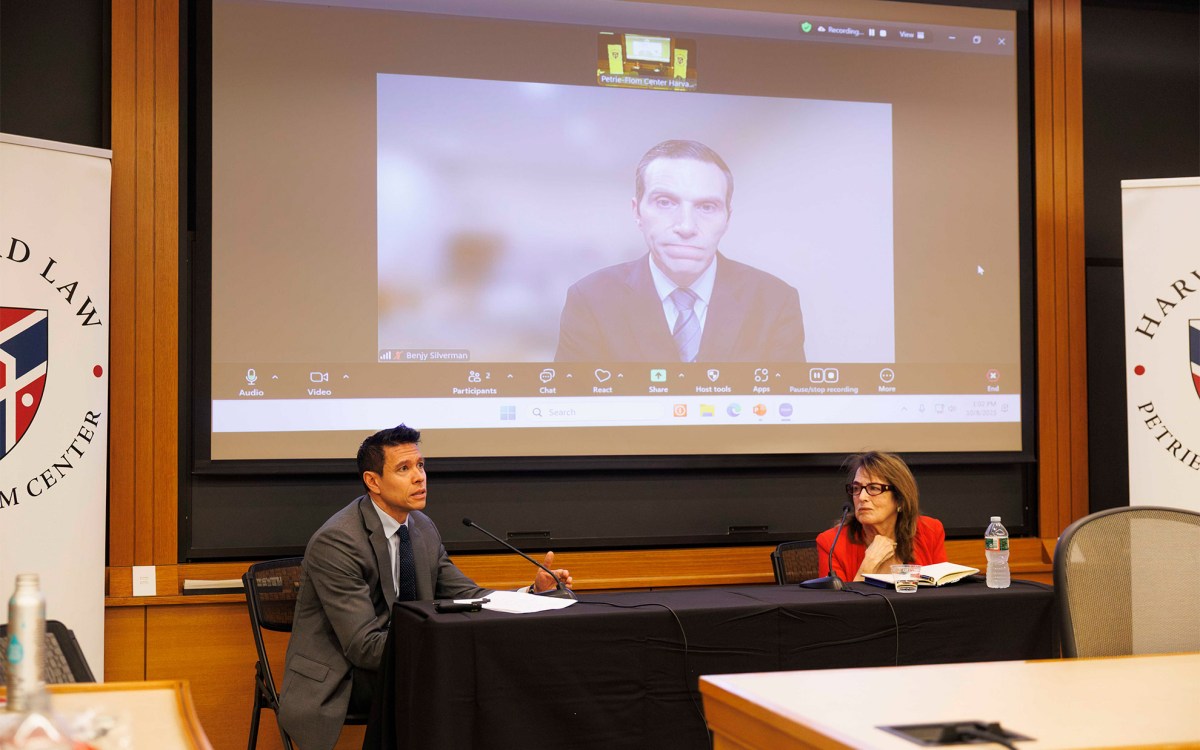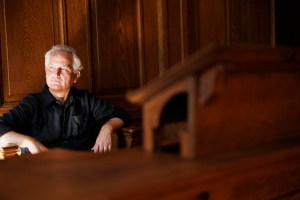Tag: Animals
-
Arts & Culture
Taxonomist Carl Linnaeus on show at HMNH
Carl Linnaeus believed that the fruit of the Tree of Knowledge was not an apple but a banana. He came to this conclusion in 1737, while studying plant specimens at Hartecamp, the estate of George Clifford, a wealthy Dutch banker and director of the Dutch East India Company. Clifford collected exotic plants from around the…
-
Arts & Culture
Taxonomist Carl Linnaeus on show at HMNH
Carl Linnaeus believed that the fruit of the Tree of Knowledge was not an apple but a banana. He came to this conclusion in 1737, while studying plant specimens at Hartecamp, the estate of George Clifford, a wealthy Dutch banker and director of the Dutch East India Company. Clifford collected exotic plants from around the…
-
Science & Tech
Over the river, through the woods
For close to 30 Hyde Park preschool children, a recent trip to the Arnold Arboretum, the majestic 265-acre botanical garden run by Harvard University in Jamaica Plain, meant a journey to a world alive with natural wonders and surprises.
-
Health
Field school brings students to Borneo
Morning came in the middle of the night in the hikers’ hut partway up the side of Borneo’s towering Mount Kinabalu.
-
Health
Popular causes not necessarily best
Conservation policies favoring keystone animal species are insufficient to conserve the world’s biodiversity because many of these target animals don’t live in the world’s most biodiverse spots: lowland tropical forests under pressure from agriculture, logging, and other human activities.
-
Health
Biologists remember landmark theory
Forty years ago, Edward O. Wilson and Robert H. MacArthur described how size and isolation determine how many species an island can support. Last week, biologists gathered to mark the theory’s anniversary, calling it a “pivotal point” in ecology’s relatively short history.
-
Science & Tech
Harvard brings the Earth to high school
Steam vents in Yellowstone National Park are part of the area’s unique environment, seen in a case study exploring Yellowstone and the reintroduction of wolves into the park. This case study is part of a new environmental science course for high school science teachers.
-
Health
‘Speed limit’ found on rate of evolution
Harvard University scientists have identified a virtual “speed limit” on the rate of molecular evolution in organisms, and the magic number appears to be six mutations per genome per generation — a rate of change beyond which species run the strong risk of extinction as their genomes lose stability.
-
Campus & Community
Newsmakers
In August, the Rev. Professor Peter J. Gomes, the Plummer Professor of Christian Morals and Pusey Minister in the Memorial Church, was appointed by Queen Elizabeth II to membership in The Most Venerable Order of the Hospital of St. John of Jerusalem, the oldest order of chivalry in the United Kingdom, dating to the 10th…
-
Health
Losos’ lizards give evolutionary clues in island experiments
Tiny islets in the Bahamas have proven useful laboratories to illustrate natural selection’s effects on island lizards, which saw their legs lengthen, then shorten as ground-dwelling predators drove them into the trees.
-
Health
Primates expect others to act rationally
When trying to understand someone’s intentions, nonhuman primates expect others to act rationally by performing the most appropriate action allowed by the environment, according to a new study by researchers…
-
Health
Jane Goodall: A life in the field
As a girl in England, Jane Goodall had a toy chimpanzee named Jubilee — a harbinger of the primatologist she was to become and of the jubilant audiences that greet her at every turn in adulthood. Beginning in 1960, her groundbreaking studies of chimpanzees in the African wild led to a series of revelations that…
-
Health
Sleep found to repair and reorganize the brain
Most of us do it every night but we don’t know why. If you miss too many nights, it might kill you. We know why we eat, drink, breathe, and move around, but no one can explain why we need to sleep. What does seven or eight hours of snoozing really do for us? Van…
-
Health
Seeing the forest, from the trees
Alain Houle thinks higher-status chimpanzees likely feed on more, higher-quality fruit — found higher up in the tree — than lower-status chimpanzees, which leads to the chimps being in better physical shape and greater breeding success. “I thought I’d be killed,” Houle said later. “They climbed up, looked at me, barked at me, and then…
-
Health
Wilson urges alliance to save species
Edward O. Wilson sees a future in which science and religion join forces to save the natural world. Without such an alliance, said the legendary Harvard biologist and author, an alternative future is in store for the human race: one of accelerating environmental cataclysm fueled by overpopulation, deforestation, declining fisheries, and climate change.
-
Health
Orangutan research yields conservation dividends
The population of the orangutan, one of humankind’s closest animal relatives, has declined with human expansion. The orangutan population declined by 97 percent in the 20th century and over 90 percent of their rainforest habitat has been destroyed. The factors contributing to that decline – illegal logging, conversion of forestland to agriculture, and hunting to…
-
Science & Tech
Arctic hit by global warming first
Scientists from the eight nations bordering the Arctic recently enlisted representatives of the region’s native peoples to help assess climate change there. What they found put a human face on a debate often involving distant projections and abstract numbers. Less snow, less sea ice, freezing rain in winter, and the appearance of mosquitoes and robins,…
-
Health
Big brains better for birds
As you might guess, big-brained birds survive better in the wild than those less cerebral for their size. Scientists guessed that too, but they had to prove it to themselves.
-
Health
Nanowire arrays can detect signals along individual neurons
Opening a whole new interface between nanotechnology and neuroscience, scientists at Harvard University have used slender silicon nanowires to detect, stimulate, and inhibit nerve signals along the axons and dendrites of live mammalian neurons.


